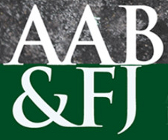Abstract
Financial health is of great concern for a business firm. For measuring the financial health of a business firm, there are lots of techniques available. But Altman’s Z-score has been proven to be a reliable tool. This model envisages to predict the possibilities of bankruptcy of manufacturing organization. Multiple discriminate analyses (MDA) are useful tools in such situations. The use of MDA helps to consolidate the effect of all ratios. Keeping the above view in mind, the “Z score” analysis has been adopted to monitor the financial health of the company. The current study has been conducted to assess the financial health of a firm namely Raysut Cement Company SAOG and its subsidiaries in Oman. This study was based on the secondary data which was obtained from the published sources i.e. Annual report for the period of 8 years (2007 to 2014). The study revealed that the Company Raysut Cement Company SAOG and its subsidiaries are financially sound as they have higher Z score than the benchmark (2.99) except in some years of study. The findings of the study may be useful for the managers to take financial decision, the stockholders to choose investment options and others to look after their interest in the concerned cement manufacturers of the country.
Keywords: Financial health, Altman’s Z-score, Raysut cement company
How to Cite:
Mohammed, S., (2017) “Bankruptcy Prediction by Using the Altman Z-score Model in Oman: A Case Study of Raysut Cement Company SAOG and its subsidiaries”, Australasian Accounting, Business and Finance Journal 10(4), 70-80. doi: https://doi.org/10.14453/aabfj.v10i4.6
Downloads:
Download PDF
877 Views
9246 Downloads

